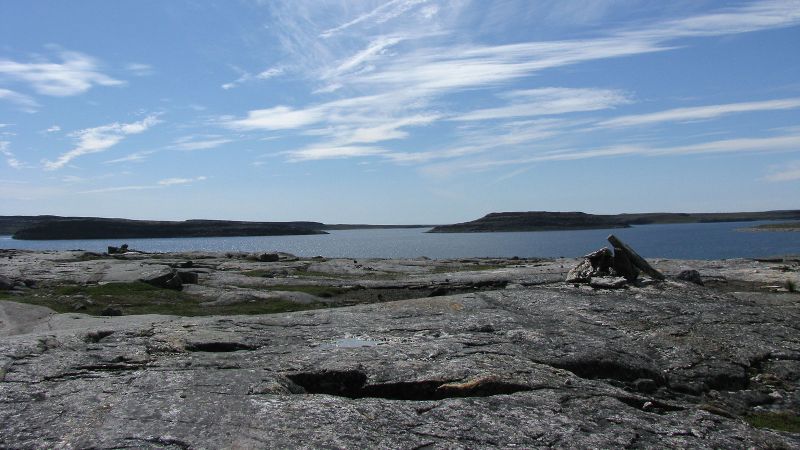
CNN — A remote rocky outcrop in northern Quebec, Canada, has long been a focal point for geologists seeking to uncover the mysteries of Earth’s earliest history. The Nuvvuagittuq Greenstone Belt, located on the eastern shore of Hudson Bay, now claims the title of Earth’s oldest rock, dating back to a staggering 4.16 billion years.
Breaking: Landmark Discovery in Earth’s Geological Timeline
New research published in the journal Science reveals that this ancient ocean floor remnant contains the oldest known fragments of Earth’s crust. This discovery places it firmly within the Hadean Eon, the planet’s first geological eon, which began 4.6 billion years ago.
“Rocks are books for geologists, and right now we’re missing the book on the Hadean,” said Jonathan O’Neil, a geologist and author of the study. “The Nuvvuagittuq Greenstone Belt would be at least one page of that book.”
Key Details Emerge
The Nuvvuagittuq Greenstone Belt has been the subject of intense scientific scrutiny over the past two decades. While previous studies dated the rock at 3.75 billion years old, O’Neil’s latest research suggests it is significantly older.
The Nuvvuagittuq Greenstone Belt is now dated at 4.16 billion years, making it Earth’s oldest known rock.
Industry Response
The study has reignited debates within the geological community. Some scientists, like Bernard Bourdon from the Lyon Geology Laboratory in France, find the new evidence more convincing than previous claims. “The two techniques used now give the same age. That’s good,” Bourdon noted.
However, skepticism remains. Hugo Olierook, a senior research fellow at Curtin University, cautioned, “Whole-rock samples can be problematic as they have multiple minerals, which could alter the age.”
By the Numbers
- 4.16 billion years: Age of the Nuvvuagittuq Greenstone Belt
- 4.03 billion years: Age of the Acasta Gneiss Complex, previously considered Earth’s oldest rock
- 4.5 billion years: Age of some meteorites, not part of Earth’s rock record
Expert Analysis
O’Neil’s study employed radiometric dating techniques using samarium and neodymium isotopes, a method often reserved for meteorites. This approach was necessary due to the scarcity of zircon minerals, which are typically used for dating ancient rocks.
“We tried to find zircons. They’re just not there,” O’Neil explained. Instead, the team focused on metagabbroic intrusions within the belt, which yielded consistent dating results.
What Comes Next
The implications of this discovery extend beyond geological timelines. Nearby rocks may harbor signatures of early life, such as microfossils, according to Dominic Papineau from the Chinese Academy of Sciences.
“Evidence of very early life in these sedimentary rocks indicates that the origin of life can take place very quickly,” Papineau said, suggesting that life may be more common in the universe than previously thought.
Background Context
The Nuvvuagittuq Greenstone Belt was first mapped in the 1960s but gained scientific attention in the early 2000s. O’Neil has been studying the site since his doctoral studies, initially proposing an age of 4.3 billion years in a controversial 2008 paper.
Despite the ongoing debate, the latest findings provide a clearer picture of Earth’s formative years, offering insights into the planet’s origins and the conditions that may have fostered life.
Regional Implications
The discovery underscores the significance of Canada’s geological heritage, particularly in understanding the early Earth. The Nuvvuagittuq Greenstone Belt now stands as a critical piece in the puzzle of Earth’s ancient history.
As research continues, the scientific community remains eager to explore the belt’s potential to unlock further secrets of our planet’s past.






